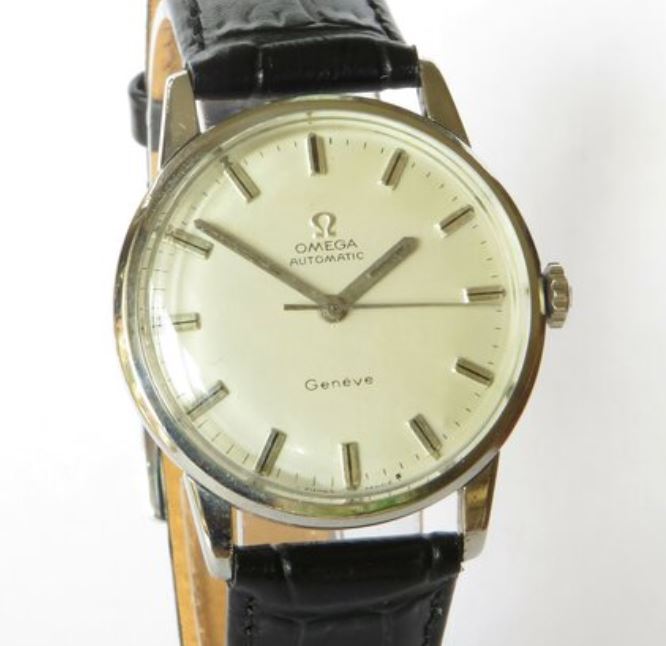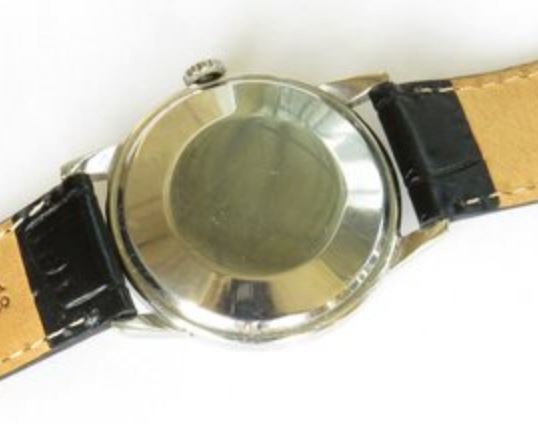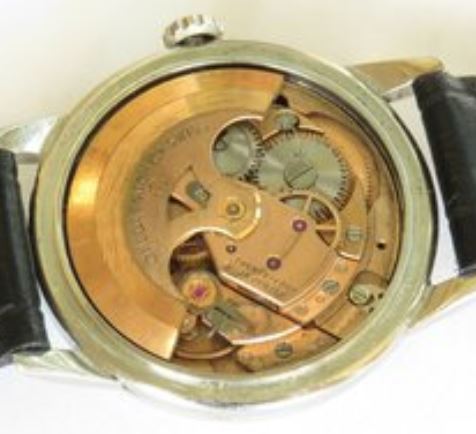Last Updated on June 29, 2024 by Jason
This is one of the latest additions to my vintage watch collection. It is an Omega Geneve automatic dating to 1968. It is not just a classic vintage watch, it’s a style statement. This Omega is powered by a calibre 552 24-jewel automatic movement which is working nicely and keeping good time. The movement is fully signed and it has the serial number 26,850,631 which dates it back to 1968.

Omega
Founded in 1848 by Louis Brandt in La Chaux-de-Fonds, Switzerland, Omega initially operated as a modest workshop assembling pocket watches. Brandt’s dedication to quality and craftsmanship quickly earned Omega a reputation for precision timekeeping.
In 1894, Omega revolutionised watchmaking with the introduction of the 19-ligne Omega calibre, which would later be named the Omega movement. This breakthrough marked the beginning of Omega’s dominance in the field of precision timekeeping.
By the early 20th century, Omega had gained international recognition for its accuracy and reliability. The brand’s watches were utilized in various sporting events and expeditions, including the Olympics and polar explorations. Notably, Omega became the official timekeeper for the Olympic Games in 1932, solidifying its reputation as a leader in sports timekeeping.
During World War II, Omega supplied watches to the British Royal Air Force and other Allied forces, further cementing its role in military and aviation timekeeping. This included being one of the Dirty Dozen watchmakers.
In the post-war era, Omega continued to innovate, introducing the iconic Omega Seamaster in 1948, followed by the celebrated Omega Speedmaster in 1957. The Speedmaster, renowned for its durability and precision, would later gain fame as the first watch worn on the moon during the Apollo 11 mission in 1969.
Throughout the 1960s and 1970s, Omega expanded its presence globally, establishing itself as a symbol of prestige and innovation in the watchmaking industry. The company continued to push the boundaries of technology and design, introducing new materials and advancements in watchmaking.
Geneve brand
The Omega Geneve range of watches was a collection of timepieces that was introduced by the Swiss watchmaker Omega in the 1950s. This was to commemorate their 30mm calibre chronometer, which broke records at the Geneva Observatory. Omega had designed and created the 30mm calibre for commercial use in wristwatches in 1939. At the Geneva Observatory Category D competition in 1945 the 30mm calibre came in 1st Place. The name Geneve refers to the city of Geneva, where Omega had its headquarters at the time. The Geneve watches were designed to be elegant, versatile, and affordable. They were aimed at a younger and more urban market.
The Geneve watches used the same movements as almost all other Omega timepieces, they just weren’t purpose-built for sea depths or space flights. The Omega Geneve pieces were always meant to be the ‘essence’ of what an Omega was, an elegant and accurate timepiece. The Geneve range was in production until the early 1980s. Omega released many different models over the collection’s lifespan, some of which were truly unique. There are watches with oval, rectangular, and barrel-shaped cases in gold or stainless steel. Each timepiece features a manual, automatic, or quartz movement, with or without a date display.

Omega calibre 552
The Omega calibre 552 movement is an automatic movement which was introduced by Omega in 1958. It was considered one of Omega’s most successful movements, remaining in production for nearly 20 years. The movement is very highly regarded for its accuracy and reliability. The movement has 24 jewels and a frequency of 19,800 vibrations per hour. The power reserve when fully wound is around 50 hours. The movement also features an Incabloc shock-resistant balance staff and a self-compensating flat balance spring.
The movement is decorated with circular graining and Geneva stripes and has the Omega logo engraved on the rotor. The Omega calibre 552 movement was used in many different Omega watches, including the Seamaster, the Constellation, the Geneve, and the De Ville. Some of these watches can be found with chronometer-certified movements, which means they have passed accuracy tests conducted by the Official Swiss Chronometer Testing Institute (COSC).
Incabloc
The Incabloc shock protection system is the trade name for a spring-loaded system for the jewel bearings which support the balance wheel in a mechanical watch. This is designed to protect the pivots and bearings from damage if the watch is subject to a physical shock, for example, if the watch is dropped. The Incabloc system was developed in 1934 by Swiss engineers Georges Braunschweig and Fritz Marti, at Universal Escapements, Ltd, in La Chaux-de-Fonds, Switzerland.
The components that support the watch balance wheel are fragile in comparison to the weight they must support. Without shock protection, they are the parts of the watch most likely to be damaged from sudden shock. Before the widespread use of shock protection systems such as Incabloc, broken balance staffs were a common type of damage needing watch repair.
The Incabloc system uses a “lyre-shaped” spring to allow the delicate bearings to shift within their settings during impact until the stronger shoulder of the staff contacts the metal endpiece. This means that the pivots and bearings don’t have to bear the full force of the impact. When the impact is over, the springs guide the components back to their original positions. The staff itself does not move relative to the jewel bearing, but the whole bearing is carried in a metal bushing that is free to move in the metal endpiece, under the control of the spring.

Dimensions & dial
The watch measures 33.5mm in diameter excluding the winding crown and the lugs. The case is stainless steel, there is the odd small mark but nothing too serious on the front and sides. There are a few more marks on the case back, but this is to be expected of a vintage watch. The inner case back has the Omega logo and also the case reference 14703 2 SC which is correct for the calibre 552 movement. It has the original signed Omega winding crown. The acrylic lens is in good condition. The signed cream-coloured dial is in excellent condition. The original dial is signed Omega, Geneve and T Swiss Made T.
“T Swiss Made T”
The “Swiss Made” marking indicates that the watch was made in Switzerland under strict terms and conditions. It is a label or brand that represents quality in the global watchmaking industry. It is also a geographical trademark protected under a number of Swiss and international laws and treaties. The “T” on either side of the marking indicates that the luminescence on the dial is triggered by tritium, a radioactive element, reacting with the paint on the hour markers and hands. Originally, this would have allowed users to read the time in the dark. Tritium was used for luminescence from the 1960s until the 1990s. Although not as dangerous as radium, it still exposed users to a radioactive health risk. Today, watch manufacturers typically use non-radioactive luminescent materials such as Super-LumiNova or LumiBrite. These offer similar visibility in the dark without the health risks associated with radioactive substances like tritium.
Tritium has a half-life of about 12.5 years, which means that its radioactivity diminishes by half every 12.5 years. The luminosity of tritium-based luminescent materials typically lasts for around 10 to 20 years before the brightness noticeably diminishes. Any vintage “T Swiss Made T” watches are highly unlikely to show any practical luminescence. Vintage watch collectors, with a preference for originality, generally prefer that the luminescence is not restored.
Summary
The watch is keeping excellent time at approximately +20 seconds per day, this is perfectly acceptable for a vintage watch. It is in remarkable condition for a timepiece dating back to the late 1960s. The few markings that it has on the case would be referred to as patina and doesn’t detract from the watch itself. It has an elegant slim-line design which makes it perfectly suitable as a dress watch. This is a vintage watch which would appeal to many collectors. I certainly enjoy wearing this vintage watch on my wrist.
Related content
The official Omega website.
Beautiful vintage watch in great condition. It seems like it is running well, +5 secondes a day is great for a vintage watch, in fact its great for most mechanical watches. Enjoy your Omega Geneve vintage watch!
Hi Alan, it is a beautiful vintage watch and running very well. I wear it on rotation and it draws a lot of comments. Thanks for taking the time to comment, Jason